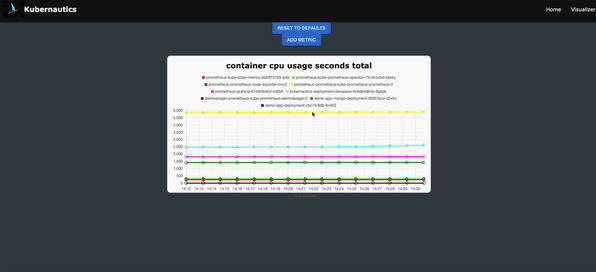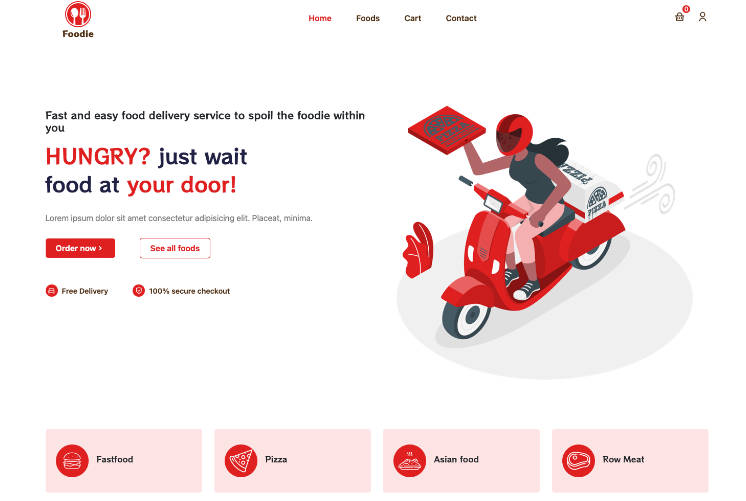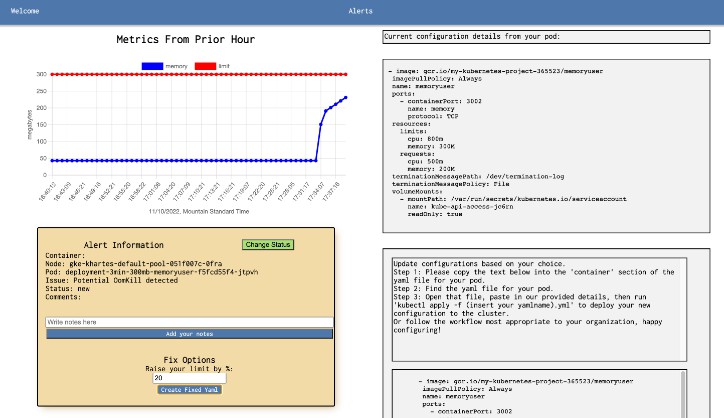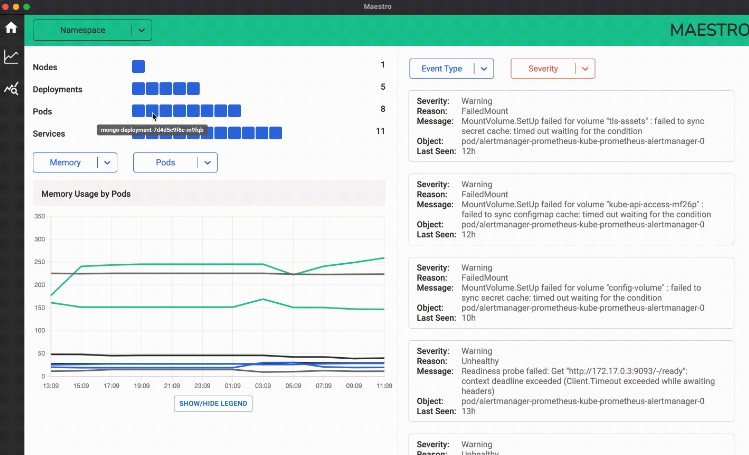Kubernautics

Built with
Features
1. Realtime Monitoring Dashboard
- Kubernautics compiles all metrics you want to track and constantly pulls information based off of the custom metric scrape rate
2. Customizable Metrics
- Kubernautics simplifies the Prometheus scraping tasks and provides additional information to each query task
3. Cluster Visualization
- Kubernautics depicts the interdependencies within your cluster but also employs a color-coded system for ease of navigation
Getting Started with Kubernautics
Building the Container Image
The Kubernautics container image must currently be built from source. Download a copy of this repo, and once inside run —
docker build . -t kubernautics:latest
— to yield an image that can be deployed into your cluster.
Deploying to your cluster
Kubernautics currently assumes it can communicate with prometheus at the following address —
http://prometheus-kube-prometheus-prometheus:9090
— which is the default configuration when Prometheus is deployed via the Community Helm Chart. We plan to make this configurable in the future.
For a reference deployment, you can run npm run cluster:prod up from inside the repository. You will need minikube and devspace installed locally on your machine; see the setup guide for developers for more info.
How to Contribute
- Fork the Project
- Create your Feature Branch based off of Dev
git checkout -b feature/NewFeature
-
Commit your Changes
git commit -m 'What was changed: Description of the NewFeature'
- Push to the Branch
git push origin feature/NewFeature
- Open a Pull Request (from
feature/NewFeaturetodev)
- make sure newest dev branch has been merged
Progress
| Feature | Status |
|---|---|
| Customizable Cluster Visualizer | ⏳ |
| Additional Chart Typing | ⏳ |
| Automate Prometheus Configs/Deployment | ⏳ |
| Increase Test Coverage | ?? |
| Reduce Resource Usage | ?? |
| Deployment with cloud-hosting providers | ?? |
- ✅ = Ready to use
- ⏳ = In progress
- ?? = Looking for contributors
License
By contributing, you agree that your contributions will be licensed under Kubernautics’s MIT License.





)

)




)









